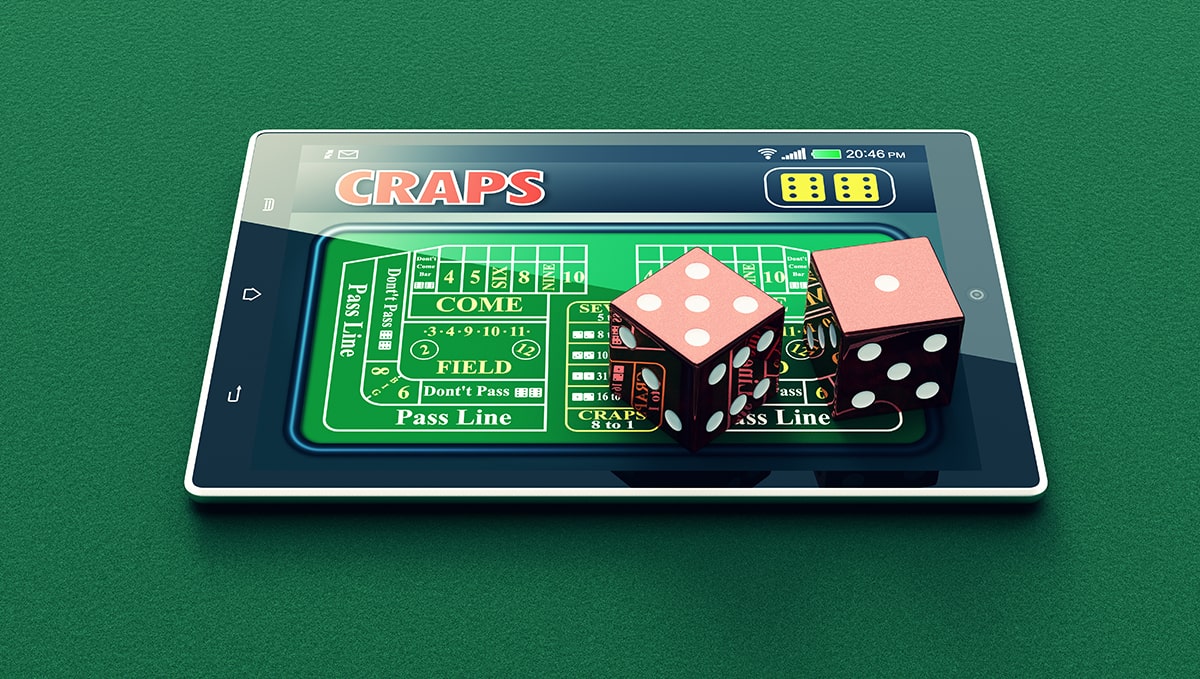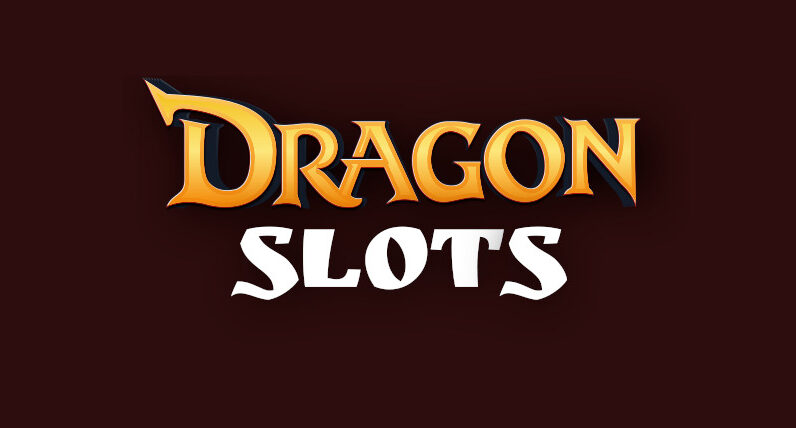
Table of Contents
What is Craps?
Craps is a dice game where you’re betting on the combined total of the roll of two six-sided dice. You can be the ‘Shooter’ (the player who rolls the dice), but you can also bet on the outcome of the dice, even if you’re not the one actually shooting the dice.
Unlike card games like poker and blackjack, you’re not competing against other players on the table or the dealer – you’re betting on the dice.
The game has an interesting history. It originated as a game called Hazard in England and was introduced to New Orleans by French settlers. For a long time, it was played on backstreets and neighbourhood corners, which helped it grow very quickly in popularity.
Eventually, casinos adopted it and introduced structured betting layouts. In this guide, I’ll explain both the basic game and the betting layout of the craps table, which you’ll find at online casinos or at land-based casinos, such as the Melbourne Crown.
Note from Australian Gamblers: In the following sections, I will be explaining how the standardised casino version of craps works. The original game, or ‘street craps’, isn’t played the same way as casino craps. There’s no table, Pass Line, Come Bets, or layout, just two dice and players betting directly with one another. The basic rules are similar, but the whole structure with the Pass Line, points, and table layout is a casino invention designed to formalise the game.
All the Bets in Craps

The ‘primary’ or standard bet in the formalised version of craps is the Pass Line. From there, casinos introduced other bets, so you’ll find Don’t Pass bets (the opposite of the pass line), Come and Don’t Come bets (which work like the Pass Line bet but can be made after the come-out roll), and extra options or side bets like Odds bets, Field bets, Place bets, and Proposition bets that let you bet on specific numbers or outcomes.
There’s also the option to lay bets in craps, which is the opposite of the Pass line. Admittedly, all these extra bets make the craps table look busy, but they’re actually straightforward once you break them down, so I’ll explain how each bet in craps works and how you win it.
The Pass Line is usually placed at the bottom of the standardised (otherwise known as Las Vegas) craps table. To play this bet, you need to place your chips on it before the first roll of the round. This is also called the come-out roll, and the payout for the Pass Line is 1:1 (for every A$10 wagered, you get A$20).
If the come-out roll is a 7 or 11, the Pass Line wins. Any combination of the dice that combines an added score of 7 or 11 is a winning one, like a 4 and a 3, or a 6 and a 5.
Note from Australian Gamblers: To avoid any confusion, any score in craps is the combined score of the two dice. Remember that any score I’ll be using in this guide is the combined score of the two dice.
So, if the come-out roll is a combined 2, 3, or 12, it’s “craps” and the bet loses. I’ve always found it funny how this is the only game named after the losing bet.
If the come-out roll is any other number, like 4, 5, 6, 8, 9, or 10, the score becomes the ‘point’ in the game. Then, the shooter rolls the dice again, but this time, if they roll a 7, the Pass Line bet loses. To win, they need to score the ‘point’.
Let’s take a scenario to clarify things: let’s say the come-out roll is a 5. The Pass Line neither loses nor wins, but 5 becomes the point. In the second roll, the score is 7. The Pass Line loses.
The RTP for the Pass Line in craps is around 98.59% (1.41% house edge), so I’d say it’s one of the best bets at the casino, with the only better bets being on blackjack (when played with the perfect basic blackjack strategy) and baccarat’s Banker and Player bets.
The Don’t Pass Line is a bet that’s usually placed just above the Pass Line, and is the exact opposite of the pass line. It’s considered a main line bet, and, theoretically, you’re betting against the shooter. Yes, you can still be the shooter and bet on the Don’t Pass Line.
You win on a come-out 2 or 3, you lose on a 7 and 11, and 12 is a push. Because of the ‘12 is a push’ rule, the house edge is actually a bit lower at 1.36%. Once the point is set, you win on a 7, and lose if the point is rolled.
There are actually two Come bets in craps, the Come bet (played on the large middle box marked “COME”) and the Don’t Come bet (usually placed at the top corner). The Come bet works exactly the same as the Pass Line, but it’s placed after the come-out roll.
After the shooter rolls the come-out roll, the Pass Line is locked, but every player on the table can place a Come or Don’t Come bet. If the next roll is a 7 or 11, the Come bet wins. If it’s 2, 3, or 12, it’s a craps and the Come bet loses. The Don’t Come bet is exactly the opposite. So, the only difference from the Pass and Don’t Pass bets with the Come and Don’t Come bets is that the latter are only placed after the initial come-out roll.
Essentially, they have been designed by casinos to speed up the game. If you’re wondering why the COME bet field is so large and in the middle, let me clarify. It’s not because it’s some special bet, but it’s purely for practicality, and to make you bet more after the initial come-out roll. Also, there are usually many players around the craps table, and the Come bet is a popular bet, so the size of the betting field is just for practicality.
Okay, it’s time to get our hands dirty. First things first, I have to prepare you: the Odds bets will seem complicated at first, but trust me, once you get it, they’re really simple to understand, and they’re (statistically) the best bet of any casino game.
An Odds bet in craps is a side bet that’s placed behind the main bet. You have to have a main bet first to place an Odds bet, be it a Pass Line, Come, Don’t Pass, or Don’t Come bet.
There are a few caveats about Odds bets in craps that I need to discuss:
- They’re the only bet in the casino that doesn’t come with a house edge (the house has no edge with odds bets as they pay true odds).
- They’re tied to the main bet, so they cannot be placed independently.
- They can only be placed by putting your chips behind your main bet. There’s no Odds bet field on the table (in online craps, there’s the option to Take Odds, but you need to click it to place the bet).
Now, the bet itself. An Odds bet is a bet on the point. As I discussed, if the come-out roll is a 4, 5, 6, 8, 9, or 10, the game continues to the next roll, and the number becomes the point, and the shooter has to hit the point for the Pass Line to win before they hit 7.
The Odds bet is completely optional, and it’s not exactly like you’re doubling down on your main bet. It’s actually a side bet that has different payouts depending on the point.
- If the point is 4 or 10, the Pass Line Odds bet pays 2:1
- If the point is 5 or 9, the Pass Line Odds bet pays 3:2
- If the point is 6 or 8, the Pass Line Odds bet pays 6:5
The difference in the payout is because there are fewer combinations for a 4 or a 10 than there are for a 5 or a 9, or a 6 or an 8. And when I say that they pay out true odds, I mean that the odds to hit each of these points correspond directly to the payout. For example, the odds of hitting a 4 or a 10 before a 7 are exactly 1 in 3, so the payout of 2:1 corresponds with it.
The Odds bet works similarly when you place it behind a Come bet, but it works slightly differently when you place it behind a Don’t Pass or Don’t Come bet.
With the ‘Lay Odds’ bet (placed behind a Don’t Pass or Don’t Come main bets), you’re hoping for a 7 before the point, so the rarer points are actually easier to win against, so the payout is smaller (1:2 for 4 or 10, 2:3 for a 5 or 9, and 5:6 for a 6 or 8).
The Field Bet is usually located just above the Don’t Pass bar and just below the COME box in the middle. It covers the numbers 2, 3, 4, 9, 10, 11, and 12. The payout is 1:1 for all numbers except 2 and 12, which usually pay double (or, in some cases, triple).
I know it looks like this is the best bet in craps because it covers 7 numbers, but it’s actually one of the worst. The house edge is about 5.56%, which is way higher than the standard bets. The Field bet is a one-roll bet, so if the roll is a 5, 6, 7, or 8, you lose. There are 16 winning combinations and 20 losing combinations, so the odds are against you with this one.
In craps, you can also bet against the house, or Lay bets. Unlike the Odds bets, Lay bets are standalone bets where you can tell the dealer, ‘Lay the 6’, or ‘Lay the 10’. It essentially means that you’re betting that the 7 will come before the number.
It seems very similar to the Odds bet on a Don’t Pass or Don’t Come bar, but the difference here is that this is a standalone bet, and even though they pay true odds (same as Odds bets), the casino charges a vig (commission) that’s usually 5% on the potential win, so the house edge is around 3%.
I’ve noticed that in most RNG online games, the Lay bet is absent, but you have the ‘Place to Lose’ bet. They’re essentially the same concept where you bet against a number, but instead of paying at ‘true odds with commission’, ‘place to lose’ bets pay at fixed odds with the house edge already calculated. This is usually not the case with live dealer games, where most studios still use the term Lay bet and take a vig.
Hard bets are wagers that a “double” will be rolled before either a 7 or the same total rolled in an ‘easy’ way. For example, if you bet on a Hard 4, the only winning combination is 2 + 2. A 7 or a 3 + 1 is a losing bet. These are the payouts for all Hardways:
- Hard 4 (2+2) – Pays 7:1
- Hard 6 (3+3) – Pays 9:1
- Hard 8 (4+4) – Pays 9:1
- Hard 10 (5+5) – Pays 7:1
I wouldn’t suggest you use Hardways very often because the house edge is around 9.09% for a Hard 6 or 8, and even worse, 11.11% for a Hard 4 or 10.
Proposition bets are a broader category that includes many different side bets, so I’ll explain the most popular ones.
- Seven bet is a bet that the next roll is a 7. It pays 4:1, but it’s a one-roll bet, so if any other number than 7 comes up, you lose. The house edge is 16.7%, so I wouldn’t recommend it.
- Craps is a bet that the next roll will be a 2, 3, or 12. It pays 7:1, but loses if any other number comes up. The house edge is at a steep 11%.
- Snake Eyes (1+1) is a bet that only wins if the next roll is a 2, and pays out 30:1.
- Yo is a bet that pays if the next roll is an 11 (5+6), and pays 15:1 if it hits.
- Box Cars is a bet that only wins if the next roll is a double 6, and pays out 30:1.
- C & E is short for Craps and Eleven, so you bet on the Craps numbers and 11 (2, 3, 11, 12).
The prop bets in craps have the lowest RTP and the highest house edge, so I suggest you avoid them and stick to the main bets and Odds bets.
How to Play Craps?
Now that you know all the bets, let’s go through how a standard round of craps actually plays out on the table.
Have in mind that if you’re playing RNG online craps, you will always be the shooter. If you’re playing live dealer craps, the dice are (usually) thrown by a machine, so you don’t need to press the Roll button to roll.
If you’re playing at a casino, you can either be the shooter or a player at the table. Essentially, it doesn’t matter if you’re the shooter or not, because the game is the same.
Select a chip size and place your bet on the table. The Come and Don’t Come bets are locked for the come-out roll.
If you’ve bet on the Pass Line and the roll is a 7 or 11, you win.
If the roll is 2, 3, or 12, you lose.
If it’s any other number, the number is chosen to be the point.
You can place an Odds bet behind your main bet with true odds.
If the point rolls before 7, you win.
The gameplay is virtually the same for any other bet, but if you’re a beginner, I suggest you stick to the basic Pass and Don’t Pass lines (or Come and Don’t Come bets), and try the Odds bets.
Craps Variants
Unlike games like roulette that have many different variants, with craps, you’ll usually find only the standardised casino version, both at online casinos and at venues like Crown Melbourne or Star Sydney. However, I’ve found some interesting variants on online platforms that change the rules slightly – although they seldom offer better odds.
Street Craps
I mentioned that this is the original version of the game, also known as Seven-Eleven or Hazard. It doesn’t exist at land-based casinos, but you might find it as an RNG game at some online casinos. The rules are all the same, but it’s a simplified version where you won’t find some of the side bets, like Hardways or Props.
Crapless Craps
I’ve found several Crapless Craps variants at online casinos, both as an RNG and a live dealer game, and it’s a variant where the Don’t Pass bet doesn’t exist. The 2, 3, and 12 aren’t losing numbers on the come-out roll, but they become the point. However, even though it might sound counterintuitive, the house edge is actually higher in this variant (around 5.38%), so I wouldn’t recommend it.
High Point Craps
This variant is a casino invention to make you believe that you’re getting better odds, when actually, you’re getting worse odds. The come-out roll ignores 2 and 3 (you need to roll again), and a natural 11 or 12 wins instantly – but a 7 isn’t an instant win. This means that the house edge is actually higher at 2.35%, so I really cannot recommend this variant, either.
Basic Craps Tips & Strategies
The first and most important craps tip is not to get greedy and go for the prop bets. Just stick with the basic bets, and you’ll always have the best odds of winning. The Pass Line and Don’t Pass Line come with a very low built-in house edge of 1.41% and 1.36%, respectively, and the house edge for Odds bets is actually 0%.
Craps is ultimately a game of chance, so there’s no system that guarantees wins, but there are ways to play to reduce the risk as much as possible:
- Avoid the “sucker” bets – Field bets, Hardways, and Prop bets are designed to look exciting, which is why I call them “sucker” bets. Don’t fall for that trap! Yes, the payouts are big, but the house edge is from 5% to 17%, which means they’ll likely burn through your bankroll quickly.
- Manage your bankroll – Craps moves very quickly, so you’ll be surprised at how quickly your bankroll can shift one way or the other. That’s why it’s best to set a budget before you sit down, and size your bets so you can play comfortably for some time. A good rule of thumb is to place 1% to 2% of your bankroll per bet.
- Use Odds Bets smartly – Odds bets have no house edge, so your chances are 50-50 with the casino. The best way to maximise value is to take full odds whenever the table allows and bet as high as possible. This might sound counterintuitive to the previous rule, but the higher the multiplier (for example, 5x of your original bet), the more you can reduce the overall house edge of your total bet.
- Play at Live Dealer tables if you’re learning – RNG craps is great to test the game in demo mode for free, but once you start playing with real money, I suggest you play live dealer craps. In RNG craps, the rolls happen very fast, so it can feel overwhelming. With a live dealer game, the pace is slower, so it’s easier to follow the action.
Where to Start Playing Craps Online

Craps is a popular game, so you’ll find it at the majority of licensed casinos that accept Australian players. Most of them offer several RNG and live dealer craps tables, so I suggest you check the game rules and betting range.
If you were following my guide so far, it means you know the rules, so to get started online, you should:
Pick a legit online casino – almost all of them offer at least several craps variants.
Complete the registration and verification processes.
Click on deposit, choose a preferred payment method, and top up your account.
All of the casinos here offer welcome bonuses, so check the T&Cs and claim it if you like what you see.
Browse the Live Dealer or Table Games sections and pick a Craps game.
Start playing.
Wrapping Up Your Craps Guide
Craps can feel intimidating at first, but once you understand all the bets on the table, it’s actually one of the simpler games in the casino. As lucrative as the side bets seem, my tip is to always stick with the low house edge bets like the Pass Line, Don’t Pass, Come, Don’t Come, and Odds.
Of course, who am I to tell you not to try your luck on a 30:1 Snake Eyes bet every once in a while, but unless you’re just having fun, prop bets are simply not a good deal. And, I’ve noticed that side bets actually cluster the table and make it seem more complicated than it really is.
Craps is a really fun game that’s different from most other casino games, and it comes with a high RTP of over 99% (if you’re using Odds bets). Yes, it’s primarily a game of luck, but it does involve an element of skill when choosing the bets and bet size, so just stick to this guide and you’ll (I hope) love this game.
Latest Articles
- https://responsiblewagering.com.au/
- https://www.gamblinghelponline.org.au/
- https://gamblershelp.com.au/get-help/

 Mike Waters
Mike Waters  Matthew Scott
Matthew Scott 

